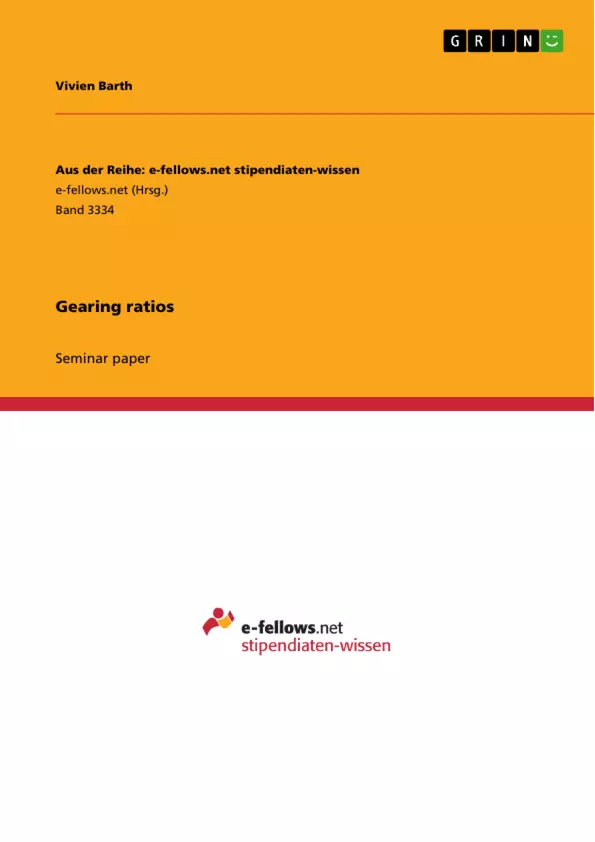This report aims at analysing the gearing ratios of both easyJet PLC, a British airline operating in several countries, and Lufthansa AG, a German aviation company operating globally. easyJet is listed in the British stock index FTSE100 and Lufthansa is listed in the German stock index DAX. These companies have been chosen, because they belong to the continent’s biggest airlines and a direct comparison seems to be feasible. The gearing ratios have been calculated using data from the companies’ annual reports from 2015 onwards.
The report found that easyJet has always had a lower gearing ratio than Lufthansa and consequently a more stable, less risky financial position. Moreover, the report found that the accounting policies of both companies are the same and thus the interpretation of results is not distorted. However, the report also found that the tone of easyJet’s narrative reporting is more optimistic, which is likely to influence the reader’s opinion in its favour. Limitations are the small sample size, the short time span and that only one ratio is analysed. Consequently, results cannot be generalised. Moreover, financial ratios do not provide a benchmark. That’s why an analysis of the industry average had been conducted as well.
Table of Contents
- EXECUTIVE SUMMARY
- INTRODUCTION
- RELATED THEORY
- DATA ANALYSIS AND DISCUSSION
- CONCLUSION
- REFERENCES
- APPENDICES
Objectives and Key Themes
This report examines easyJet's financial performance using financial gearing ratios, comparing it to competitor Lufthansa and the industry average. It explores how accounting policies and narrative information might influence the results.
- Financial gearing ratios as indicators of financial stability and risk
- Impact of accounting policies on the interpretation of financial ratios
- Influence of narrative reporting on reader perception
- Comparison of easyJet and Lufthansa gearing ratios
- Analysis of the industry average gearing ratio
Chapter Summaries
- Executive Summary: Provides an overview of the report's objective, methodology, and key findings, highlighting easyJet's consistently lower gearing ratio compared to Lufthansa, suggesting a more stable financial position. It also acknowledges limitations such as small sample size, short time span, and focus on a single ratio.
- Introduction: Introduces the report's scope, focusing on examining easyJet's financial performance using gearing ratios and comparing it to Lufthansa and the industry average. It outlines the report's structure, highlighting the analysis of gearing ratios, the influence of accounting policies and narrative information, and the data sources used.
- Related Theory: Discusses the concept of financial gearing and its relevance to stakeholders. It explains how financial gearing relates to operational and income gearing and its impact on a company's financial situation. The chapter highlights the importance of accounting policies and narrative reporting in understanding and comparing financial ratios.
- Data Analysis and Discussion: Presents a comparative analysis of easyJet and Lufthansa's gearing ratios in 2019, highlighting the differences in their reliance on debt and equity. It also discusses the significance of gearing ratio trends and the potential impact of industry averages on interpretation.
Keywords
This report explores the financial gearing ratios of easyJet and Lufthansa, analyzing their financial performance, accounting policies, and narrative reporting. Key themes include financial stability, risk, debt financing, equity financing, accounting policies, narrative reporting, and industry average analysis.
- Quote paper
- Vivien Barth (Author), 2020, Gearing ratios, Munich, GRIN Verlag, https://www.grin.com/document/514583



